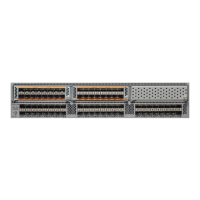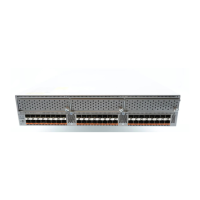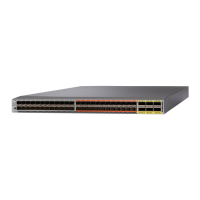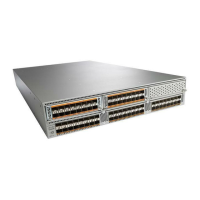Send feedback to nx5000-docfeedback@cisco.com
1-3
Cisco Nexus 5000 Series Switch CLI Software Configuration Guide
OL-16597-01
Chapter 1 Configuring SAN Port Channels
Information About SAN Port Channels
Understanding Load Balancing
Load-balancing functionality can be provided using the following methods:
• Flow based—All frames between source and destination follow the same links for a given flow. That
is, whichever link is selected for the first exchange of the flow is used for all subsequent exchanges.
• Exchange based—The first frame in an exchange is assigned to a link, and then subsequent frames
in the exchange follow the same link. However, subsequent exchanges can use a different link. This
method provides finer granularity for load balancing while preserving the order of frames for each
exchange.
Figure 1-3 illustrates how flow-based load balancing works. When the first frame in a flow is received
on an interface for forwarding, link 1 is selected. Each subsequent frame in that flow is sent over the
same link. No frame in SID1 and DID1 utilizes link 2.
Figure 1-3 SID1, DID1, and Flow-Based Load Balancing
Frame 1
Frame 2
Frame 3
Frame 1
Frame 2
Frame 3
Frame n
Frame 1
Frame 2
Frame 3
Frame n
Frame n
SID1, DID1,
Exchange 1
SID1, DID1,
Exchange 2
SID2, DID2
Exchange 1
Link 1
Link 2
Link 1
Link 2
Link 1
Link 2
79530

